Aromatic and bright Facelium - universal culture, applied not only in decorative purposes, but also as a valuable seater or green fertilizer. Enriching the soil with nutrients, macro- and microelements, this annual culture is capable of all over the same season to improve the fertility and the structural composition of the soil.
In addition to the listed advantages, Facelia is used as valuable feed and honey culture. The plant blooms almost the entire warm season, to the most frosts, providing abundant bribes for bees during the period when other plants have already beaten.
On this, the list of beneficial properties of the Facelia does not end. It is considered a real phyto by Sanitar on a garden, screking pests and displacing weed grass. About how and when to plant firelines on the plot, how to properly care for the plant and use all the advantages of annual, in this selection of material. Landing and caring for fireplace is simple and accessible to everyone, even a novice gardener-gardener.
Facelium, description of the plant
- Futsellius is a numerous plant of the bouquet family, which includes about 200-tons of annual and perennial plants.
- The area of \u200b\u200borigin of culture is considered South and North America.
- In height, different types of fakelies reach from 20 cm to 1 m.
- Futselli stem branched, reprehensive and sown. All-ray leaves can be located on the stem oppositely or alternately.
- On short flowers there are bellolt-shaped Futselli flowers, assembled in thick bundles of the colosum inflorescence. Color color differs depending on the type: they can be lilac, purple, blue, white and even yellow.

- The flowering period is long enough, starting from June and ending with September.
- At the end of the vegetative season, fruits ripen on the plant - seed boxes. Seeds are very small, they ripen a lot.

- A short season of vegetation and the rapid development of the above-ground part (green mass) of the plant allows you to search for Facelius several times in one season.
- The plant is distinguished by endurance and cold resistance, easily tolerates autumn - spring freezes to - 9 0WITH.

Useful properties of Facelia
- Given the abundance and long period of flowering of fragrant inflorescences of Facelia, the plant has long been recognized as a valuable honey. The cultivation of this medical culture on the site will attract insects, contributing to better pollination and tying of plant fruits. The uniqueness of the culture is that it blooms the entire growing season season (to the first frosts), when the bees often lack medical flowering plants. Thus, Facelius significantly increases the medical complex at different seasonal stages.

- Facelium is a famous green fertilizer (Siderat), which improves the soil structure, enriching soil nitrogen, phosphorus, potassium and contributing to the oppression of the growth of weeds. The rapid growth and volume of the green mass of the Sideratus allows for a period of flowering to pull the soil along with the thick plantations of Facelia. Many agronomists recommend to disembark this nutritious sitter once again to the previous place. Such an agrotechnical intake allows you to significantly improve the fertility of the soil, displace pests (trim nematodes, wire, caterpillars), weed grass (drinking, moc.) From the site and change the acidity of the soil (from the acidic environment to neutral). Heavy soil after planting of the Siderate becomes light, air and loose.
- Statistical data indicate a high efficiency of plane planting, followed by a peroxide of green mass. So, 100 g of seeds exiled to 1 acres of land, replace 300 kg of high-quality organic fertilizers. Nitrogen, obtained by plants after decomposition of the Siderate, is easily and quickly absorbed, which is beneficial to the green fertilizer from special mineral complexes.
- Experienced gardeners plant satellite between vegetable beds with seedlings of cabbage, zucchini, cucumbers, etc. First, the green of Facelia protects seedlings from temperature drops, weeds and winds. When vegetable cultures are fairly fixed and grow up (after 1-2 weeks), the cider is mounted and mulched the soil in the alarms of the same bed. Often this method is practiced when growing potatoes. In the conservation of humidity and high soil aeration, tubers are well developed and give high yields. For the same goals, the Facelius is planted in the garden: in the priority circles of fruit trees or berry shrubs.

- Healing soil, biologically active substances of Facelius inhibit pathogenic soil microflora. Such an action is the effective prevention of fungal, viral and bacterial diseases, such as phytoofluorosis, root rot, password, etc. This useful property once again underlines the effectiveness of sowing Facelia together with vegetables, attracting insect pollinators and preventing infection with infections.
- The universal plant, Facelium, is a valuable feed crop applied to cattle. By nutritional, the green mass of Facelia exceeds Wicco-oat and other feed mixes for pets.
- Culture can be used not only for useful and practical purposes, but also as an ordinary decorative plant, with an abundance of bright inflorescences, who informs its blossom almost the entire warm season.

Types of Facelia
The most common in horticulture and agriculture recognized 4 types of Futselia: bell tower, pijmalis, twisted and Futsellius Purbish. Consider the main advantages and differences of each of the varieties.

Facelium Belloltaya
The low-speed annual (up to 25 cm), with a reprehensive, reddish shade, stem. The foliage of the green color with the Sizem of the raid and dark red edging along the edges. Bell-tired small flowers are distinguished by intense dark blue or lilac color. Flowers are assembled in one-way inflorescences brush, 10-13 pieces. Long thin stamens rise above the wedge.
The species begins to bloom abundantly after 1-1.5 months after seeding. The duration of flowering is about 40 days. Seed ripens a lot, they easily pour out of mature boxes. In connection with different periods of ripening seeds, they are collected gradually, in several techniques. With the right storage conditions, the seeds retain the germination of up to 4 years. With an uncontrolled seed collection, the plant gives abundant self-sacker.
This type of Futsellius is distinguished by the endurance and unpretentiousness of cultivation. The plant is actively developing on solar and open places. The transplant does not tolerate.
It is used mainly like a decorative plant for the decoration of flower, Rabatok, Alpine slides. It looks spectacularly this kind of fakelia in the suspended pots or baskets. Seeds are often used as part of the so-called "Mauritan lawn".
Facelium twisted
Annual plant, up to 50 cm high, with light green inwhelmed leaves. Very small blue or lilac flowers (up to 5 mm) are collected in inflorescences on the tops of the shoots. The garden shape of the Facelia with white flowers is also cultivated. Blossom Long, from June to September.
The optimal place for landing - open sunny areas with well-drained soil.
Facelius twisted planted on flower beds, along borders or alley. View does not tolerate transplanting, and loses its decorative effect during prolonged frequent rains. Decorative mind gives not only an abundance of bright dolgotsvetuschih inflorescences, but appeared after flowering seed pods.
Phacelia Tanacetifolia
The most common universal view of Futselli, combining agricultural and decorative purpose. Wide branched shoots grow to 50-100 cm in height. Tender flowers, pale blue shade, small (up to 2 cm), with a pleasant honey aroma. Flowers are collected in inflorescence of 5-10 curls, which dropped gradually. Blossom abundant, for 1.5-2 months, it begins a month after sowing.
Unpretentious, viable species is unable to soil and external environmental conditions: it is capable of growing on stony, samp soils, in the sun or in the shade.
Zasso- and cold-resistant plant is perfectly withstanding small frosts and a short lack of moisture.
This species is particularly resistant to diseases and pests.
Facelium Pures
In the height, the annual type of Faselius reaches no more than 50 cm. The plant stands out of unusual coloring flowers, with purple splashes and a snow-white core. There are also varieties with contrasting stripes or stains of blue shades. The flower dimensions are about 3 cm. The flowering continues all summer.
The view is somewhat vulnerable and "capricious" to the conditions of growth. Prefers solar, protected from wind and draft terrain.
You can buy Faceli seeds in specialized stores, in agricultural exhibitions and sales, online stores or nurseries. Thematic forums and sites will help determine the choice of a "proven" trading point and a specific type of Facelia.
Planting Facelia: Features and Recommendations
To the question: "When is it better to sow fakelius so that in spring the soil is ready for landing of the main cultures?", Gardeners clearly advise: "In the fall, under the winter." In the case of the autumn seeding of Facelia, the spring soil will be provided with valuable nutritional microelements, humus (rich organic substances) for the subsequent planting of cultivated plants. In addition, sowing Facelia "in the winter" prevents the development of water and windy erosion of the soil. The main condition is to sow seeds of Facelius in the late autumn so that they do not have time to be germinated before the onset of frosts.
You can search for Facelius in different ways: depending on the purpose of the use of the Siderate. Culture can be sowing as a major culture to restore the fertility of the soil and improving its quality composition on the following seasonal landings of other cultures. The second option is sowing Facelia as an intermediate culture preceding the main landings.
Consider key points of growing Facelia.
- Facelium is a light-loving culture, which means it is better to sow it on the illuminated and open areas. Many phaseli varieties are perfectly tolerated and shadow.
- Facelium is not particularly demanding to the soil and can be cultivated by almost any types of soil (clay, peat, soverees, black soil, loam, stonyness), even in the zone of risky agriculture. The least favorable for the cultivation of fervents is acidic, stagnant or saline soil.
- Seeding is carried out throughout the growing season. The first sowing of Facelia begin early in spring (after melting snow), despite the possibility of the appearance of return freezers. Cold-resistant plant perfectly tolerate low temperatures (but not more than -10 0WITH).
- For the season you can get up to 4 crop rotations of valuable seeded culture. To do this, the green mass is cut (or mounted) without waiting for blooming, after which the area is drove with the turnover of the formation and the sealing of the seedrate into the soil (the variant and surface layout is possible as a mulch); And after a few days you can sow new seeds of the Siderat. The last, autumn, sowing can be left not bevelled for the entire winter. Such reinforced soil nutrition will allow high yields in the future for several years, even without making additional fertilizers.
- If on time (before or during the flowering) does not remove the culture, Facelium will provide abundant non-controlled seed self-seams on the site.
Agrotechnology Sowing seeds is not complicated and includes several stages:
- Before sowing a plot, it is better to plug and remove weeds.
- The prepared area is aligned, slightly condensed and watered.
- Seeds in front of sowing mixed with sand or sawdust shallow fraction. It is necessary for the uniform distribution of seeds in the ground, as they are very small and light.
- The sowing material is seeded in the grooves (with a frame of 30 cm) or scatter along the prepared area, harrowing on top of a small (1.5-2 cm) layer of land. The seeds left on the surface will not sprout.
- Facelium shoots appear quickly, about 1.5-2 weeks.
- The laying rate of Facelia is about 150-200 grams per hundred ground.
- Place the Facelius should immediately at a permanent place, as the CULTURE has not transferred to the transplant.
Foothell care
- Watering the plant must be regularly (when dried), it is not worth over to overcoat the soil, and even more so allow the moisture stagnation. Especially important moisture during the germination of seeds on the garden.
- In weeding and loosening, the culture practically does not need. In the case of landing of Facelia to the grooves, at first it will be necessary to remove weary grass in a bent and loosen the soil, especially after watering.
- Spank Facelius in a seed way. Seeds are easy to assemble alone: \u200b\u200bleave the plants of the earliest crocks of sowing, they are cut off inflorescences with ripening seed boxes (on the bottom of the curls), lay the sprigs of inflorescence to complete drying and ripening. The seeds are then peathed and separated from dry impurities. It is possible to store the seed material in a dry, cool place for 3-4 years.
- To improve the decorative type of Facelia: abundant and prolonged flowering, culture (twice in season) can be filled with complex mineral fertilizers.
- Faselius is resistant to various kinds of diseases and pests, therefore does not need special processing.

conclusions
- Facelium is a beautiful decorative plant capable of decorating any flowerbed or alley. Abundant and long blossom of fragrant annual delights of all others, attracting insects-pollinators and bees.
- Planting Futsellius as a Siderate is economically beneficial and justified. Several crop rotations of grass significantly improves soil fertility, scares pests and does not require expensive fertilizers and purchasing special insecticides.
- Impropriving to the conditions of cultivation of the early Facelium has a good germination, easily breeds and grow rapidly.
- Flowal care is minimal: watering and loosening at the first stages of development. Such universal qualities make firelines indispensable in gardening and garden practice.
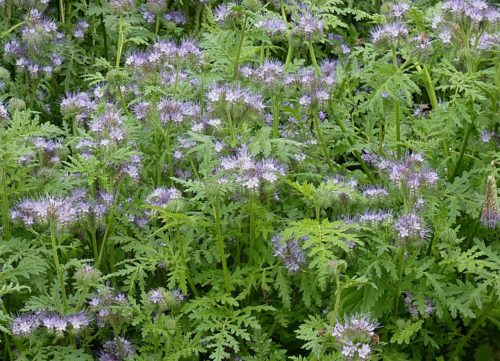
Facelium, photo
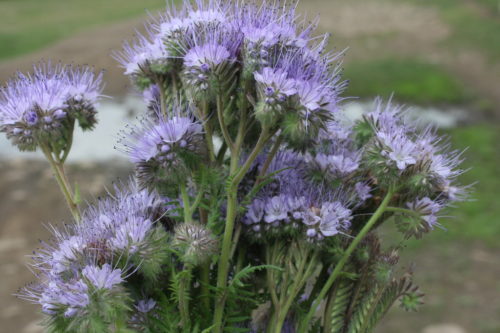


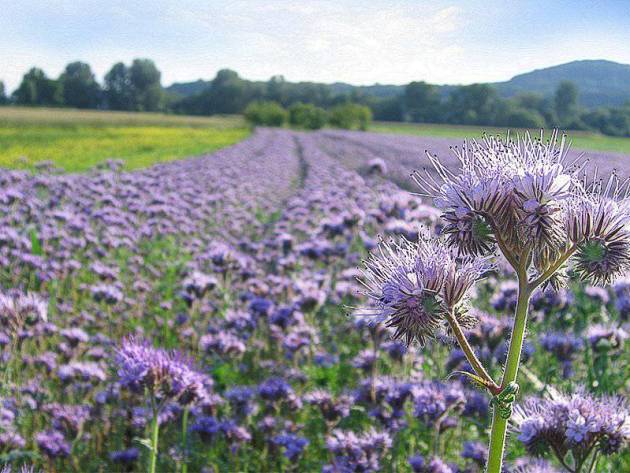













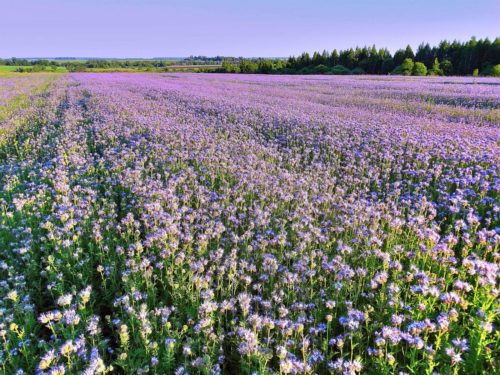

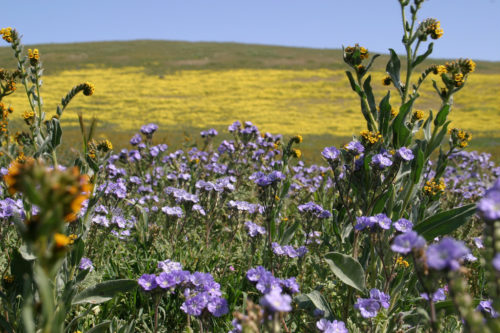
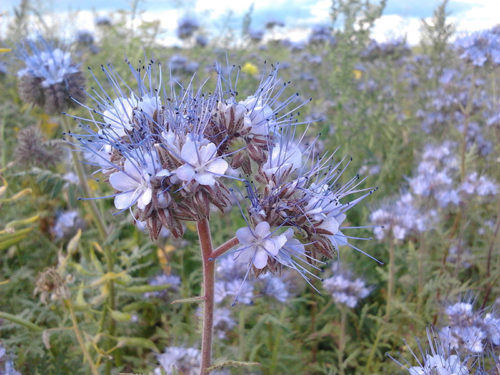
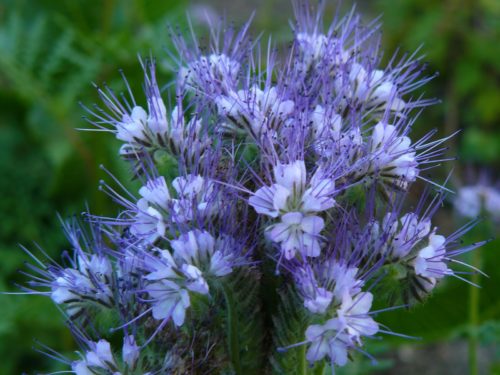
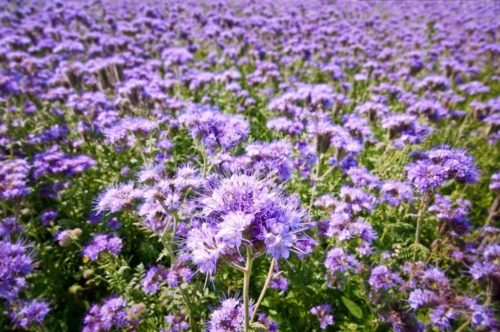
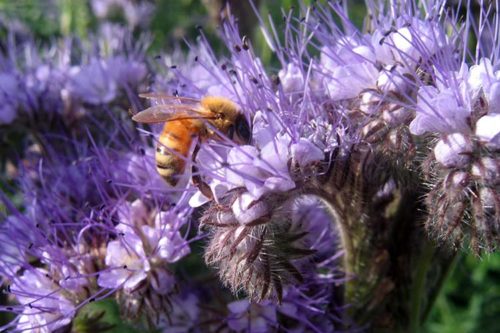
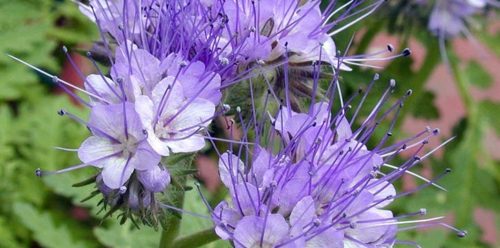
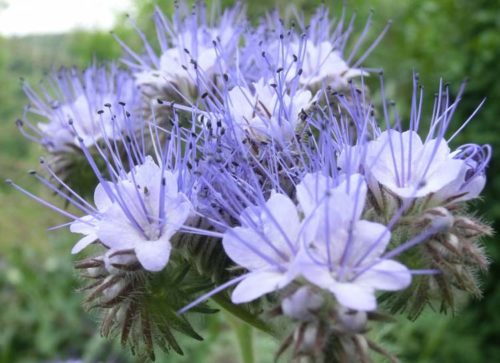












 Start a discussion ...
Start a discussion ...